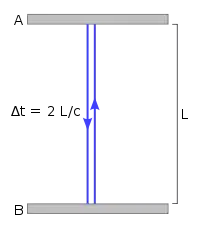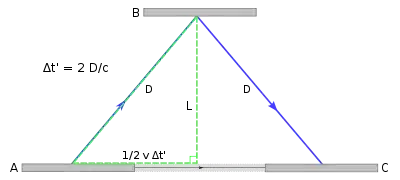The wikipedia article on Time Dilation (http://en.wikipedia.org/wiki/Time_dilation) has an explanation involving the following two diagrams:
I have some problems with these diagrams. In the second one the bottom mirror is not only moving, but it's also changed the direction in which it's emitting light so obviously the path is going to be longer. If the bottom mirror in the second diagram wasn't moving but went all the way from point A to C and emitted the light at that same angle it would result in the same 'time' measurement even though it's not actually moving.
Is the diagram implying that light will be emitted at an angle if the light source starts to travel sideways?


